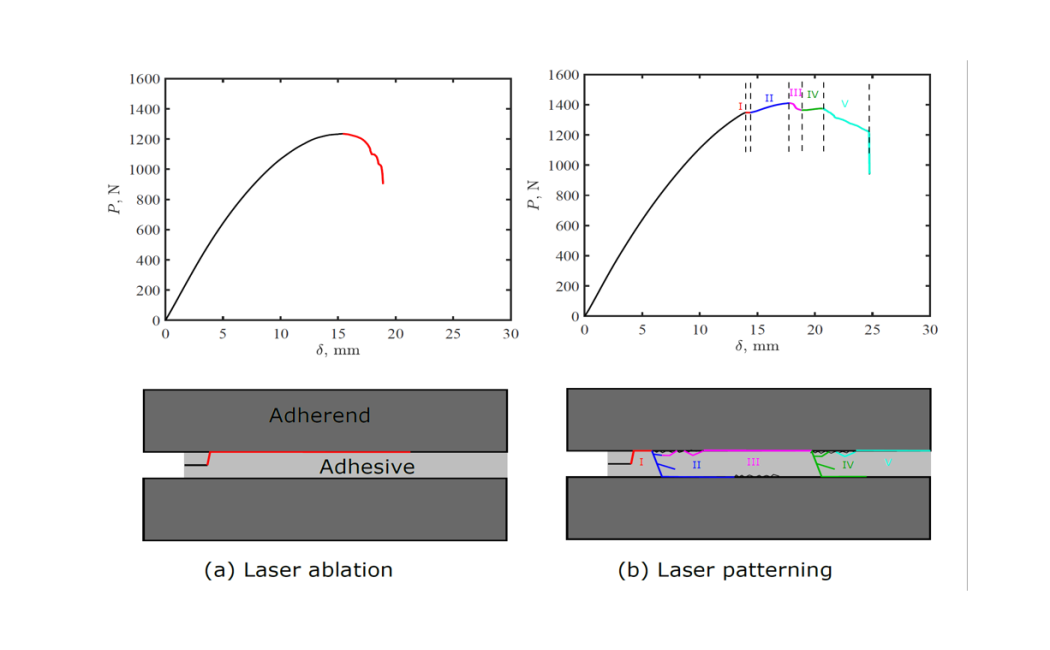


15 April, 2020
Composites Part A: Applied Science and Manufacturing; Volume 134, July 2020, Article 105892
We improve mode II fracture toughness of secondary bonded joints based on the laser treatment of adherend surfaces. We applied CO2 Laser treatment to adherend surface alternatively with low and high energy, resulting in a repeated pattern of rough and smooth surfaces. We used ENF test to characterize mode II fracture toughness, GII, of the bonded CFRP substrates. The results demonstrated that our proposed pattern arrested the crack propagation and triggered new damage mechanisms, such as adhesive cracking, adhesive failure and crack migration to the other interface. These additional mechanisms, some of them were non-local in nature, resulted in higher energy dissipation during propagation and, improved GII compared to joints with uniformly-treated adherends. The improvement in GII was dependent on the pattern morphology and reached up to 60%. The proposed strategy worked well for both thin and thick adhesives, and thus could be applied in aerospace and civil structures.
A. Polymer-matrix composites (PMCs); B. Fracture toughness; C. Damage mechanics; D. Non-destructive testing; CO2 Laser patterning
https://www.sciencedirect.com/science/article/pii/S1359835X20301305